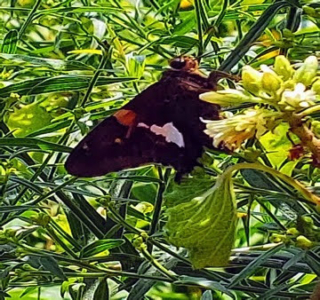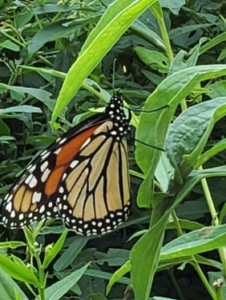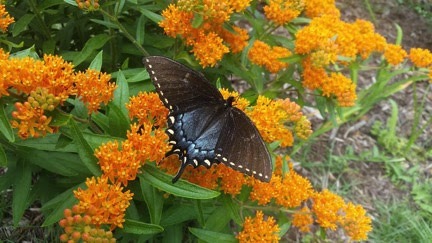This post was written by LREC Volunteer Educator Donna Bourisaw.
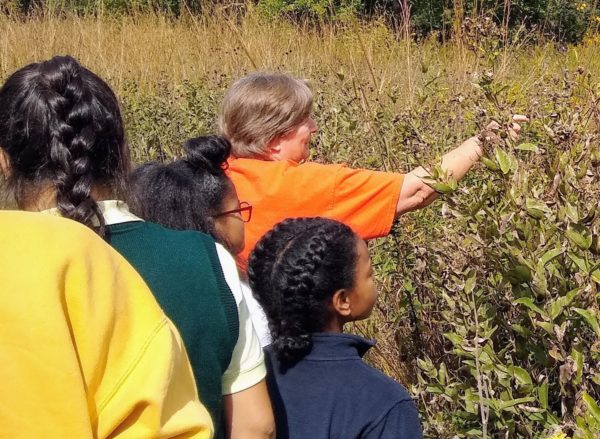
In the spring of 2018, Pam Walsh and I, Donna Bourisaw, both Volunteer Educators at Litzsinger Road Ecology Center, attended a workshop about butterflies given by Tad Yankoski at a park in St. Charles County. Tad is an entomologist at the Garden’s Sophia M. Sachs Butterfly House. He knows all about butterflies, and it was an interesting talk. We did not realize at first that this was not just an informational workshop about butterflies, but that Tad was hoping participants would become butterfly monitors throughout the St. Louis area. Most of us thought that would be an easy task, sitting on our porches and counting the butterflies that go by. However, this is not what he had in mind.
After taking the training, we decided to volunteer. This involved six walks throughout the summer on an approved route on public property at least ¾ miles long through multiple high quality habitats, such as prairie and wetlands. Lucky for us, a volunteer had monitored LREC about two years ago, but no one was currently monitoring. Tad suggested that we monitor at Litzsinger Road.
Our route started by the cabin, walking by the edge of the woods towards the glasshouse, around the north prairie, through the wildflower/rain garden, through the woods and around the pasture prairie. This usually took about 70–90 minutes to complete. During the second week of June we saw 21 butterflies on this route, but by the end of the month we spotted 61. August had the most butterflies along our route, 101 on 8/6/18, which was a hot and clear day. By the end of September we were back down to 21 butterflies. At LREC, the most common butterflies we saw were cabbage, cloudless sulphur, spring/summer azure and small skippers. In June we saw about seven monarchs, and by August we spotted 17 during our walk, many in the pasture prairie. Some of the less common visitors were tiger, giant and black swallowtails, hackberry emperor, buckeye, pearl crescent, and hairstreaks. There were also plenty of the Butterfly unknownus variety, too :). It has been fun learning names of the butterflies, and by the end of the summer we didn’t have to look very many up in our butterfly identification book.
The information from each walk was put into the PollardBase data website, and tracked along with other volunteers’ information throughout the country. PollardBase is run through a grant from the U.S. National Science Foundation and Georgetown University.
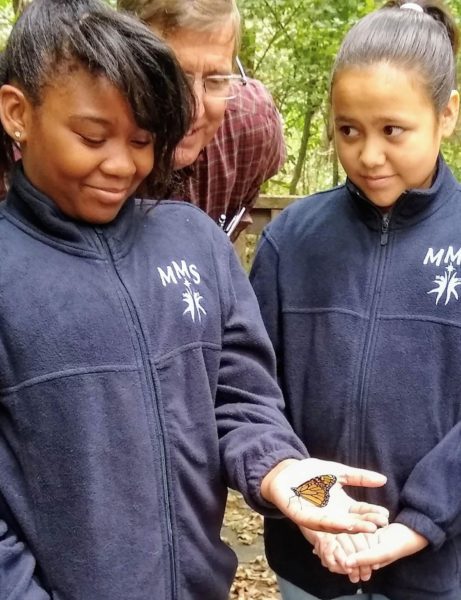 The most fun part of this summer’s experience was getting to see St. Joseph High School and Marian Middle School girls meet and work together on September 28 at LREC. The high school girls had learned extensively about monarchs at their school, and developed lesson plans with hands on experiences to share with the middle school group. They did a fantastic job of teaching the life cycle of monarchs in a short amount of time. The middle school girls got to tag and release several monarchs at LREC. Even those that were initially reluctant to touch the butterflies were very involved and enthusiastic by the end of the morning. So fun to see future butterfly monitors having a great learning experience!
The most fun part of this summer’s experience was getting to see St. Joseph High School and Marian Middle School girls meet and work together on September 28 at LREC. The high school girls had learned extensively about monarchs at their school, and developed lesson plans with hands on experiences to share with the middle school group. They did a fantastic job of teaching the life cycle of monarchs in a short amount of time. The middle school girls got to tag and release several monarchs at LREC. Even those that were initially reluctant to touch the butterflies were very involved and enthusiastic by the end of the morning. So fun to see future butterfly monitors having a great learning experience!
